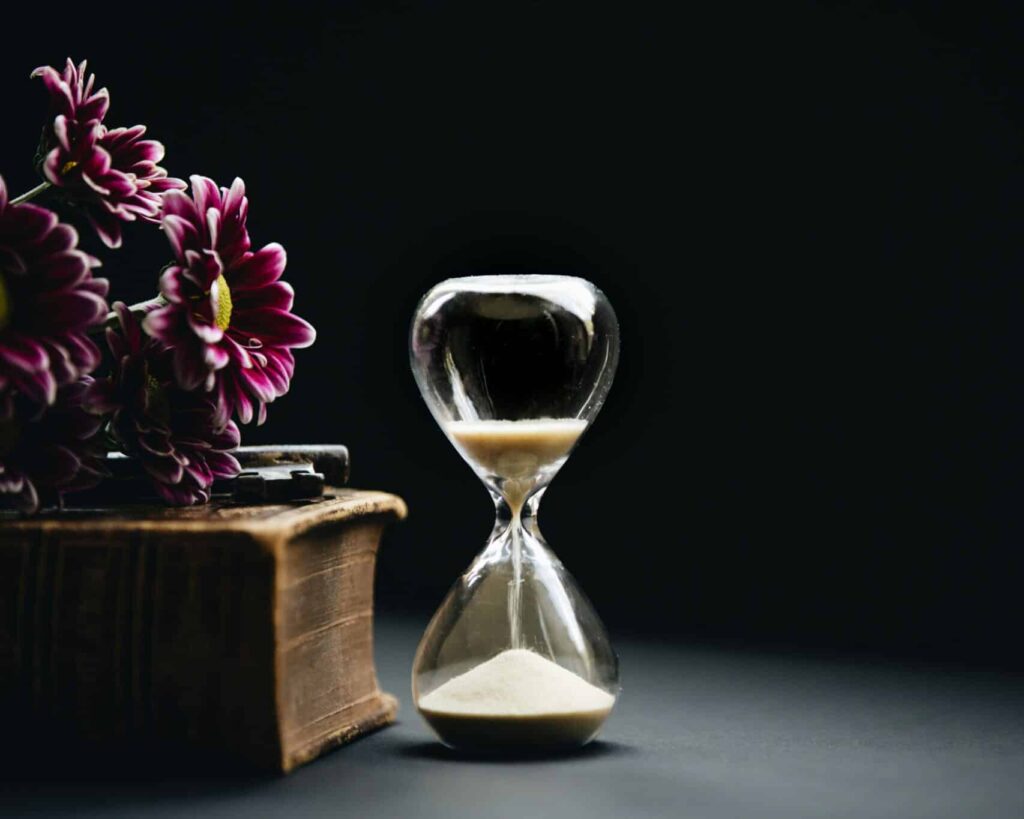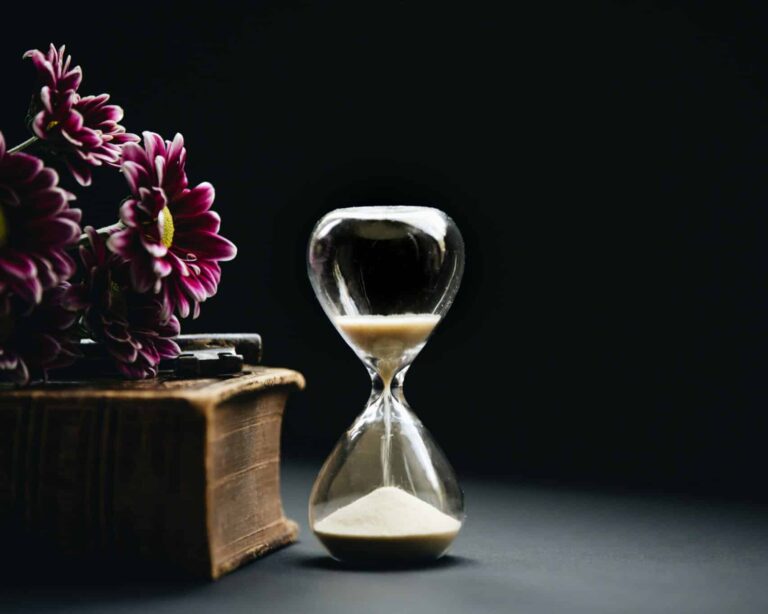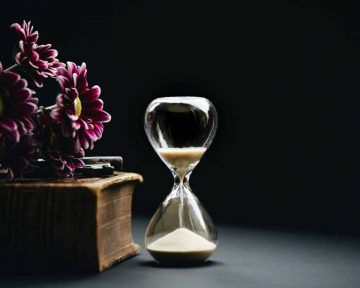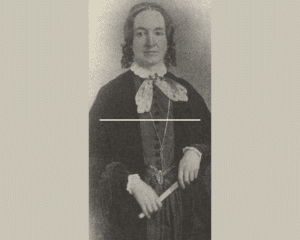Author’s note: I wrote most of this post before the election. I thought I might hang onto it until June 2025 and post it around the anniversary of the end of the Priesthood and Temple Ban. But somehow it seems relevant to post today – two days after the election that saw Donald Trump re-elected as President of the United States.
A month or two ago I read the book Second-Class Saints: Black Mormons and the Struggle for Racial Equality by Matthew L. Harris. This book looks at efforts to remove the Temple and Priesthood Ban. The book was fascinating to read. I highly recommend it.
But as I read I kept getting distracted by one question. The question was, “how much more is 85 than 78?”
I was born in 1985. I’m not sure how old I was when I first heard that there had been a time that black men could not hold the priesthood. Maybe I was 10 and I heard about it in 1995. I learned that President Spencer W Kimball had a revelation in the 1970s that allowed black men to hold the priesthood. This had all sounded like ancient history to my young mind.
I know that sounds all sorts of privileged. The removal of the Temple and Priesthood ban didn’t have a direct impact on my life. I was a while girl in Salt Lake City, Utah. Racism didn’t impact my life and so I didn’t think it existed anymore. All that Civil Rights stuff had ended racism along time ago, right?
I grew up and realized that racism wasn’t gone. But I still have my blind spots. That’s one of the reasons I read this book.
In fact, I before I read this book I couldn’t have even told you the correct year that the Temple and Priesthood ban was lifted. I thought it was in 1976 so I was surprised to read that it was in 1978.
I also realized that I’d always been a decade off in the timeline in my head. To me, the 1960s and 1970s were compressed into one unit. I was accustomed to think of the lifting of the Temple and Priesthood ban as happening concurrently with the Civil Rights movement of the 1960s. Really the ban had happened in the 1970s – the late 1970s. More than 20 years after the Montgomery Bus Boycott of 1956. Almost 15 years after Martin Luther King gave his “I have a Dream” speech in 1963. More than a decade after the Civil Rights Act of 1964 went into effect.
That’s when I started to wonder. How close to my birth did this ban get lifted?
I stopped reading and tried to do the math in my head, but my brain seemed resistant to the calculations. So I started counting on my fingers.
1978 to 1979 One year
1979 to 1980 Two years
1980 to 1981 Three years
1981 to 1982 Four years
1983 to 1984 Five years
1984 to 1985 Six years
Six years separated my birth from when black men couldn’t hold the priesthood and black people couldn’t attend the temple. Actually a little less since the ban was lifted in June of 1978 and I was born in February of 1985.
How had I never realized this event happened so close to my birth? How had I missed the fact that if I’d been born 6 years earlier I would have been born into a church that openly discriminated against black people?
I flipped back through my knowledge of family history. Where were my family members in 1978?
My dad was still in high school. My mom had started college. My grandparents were raising their eight children – my youngest aunt was born in 1977. They’d just bought a 12 passenger van that my family would inherit in 1990.
My in-laws were married and had already had their first child.
I stopped thinking about my family and started thinking about pop culture.
Star Wars had come out in 1977.
Jaws had come out three years earlier – I’d only recently watched that movie for the first time.
The songs “We Will Rock You/We Are The Champions” came out that year. I’d sung along to those songs within the last week.
1978 wasn’t the ancient history I’d always thought. People I know had been alive then. Pop culture I still enjoy had been created then.
The Temple and Priesthood ban was in place up until 6 years before I was born. It was rescinded. But the effects continued on. Folk doctrines supporting the ban were not removed from church literature and consciousness. I grew up in a world impacted by that ban’s existence and its removal. I just didn’t know it.
And here we all are today. The United States has elected an open racist (among other things) to be President – again. I’m heartbroken over this. Civil Rights and many other things that I’ve taken for granted are suddenly seeming very fragile. I guess that they’ve always been fragile, but I didn’t realize that until recently.







11 Responses
I loved your post. And I know this comment is nitpicking, but it was 7 years. You missed 1982-1983 in your counting. But everything else was spot on. Our church has still never really addressed the generations of harm caused by the ban. And we aren’t really moving forward in addressing racism in the church because we’re ignoring the decades of harmful church teachings that stemmed from it and still live in the memories of our members. I heard a seminary teacher describing scriptural reasons for the ban in the 90s, so even though I was born the year it ended, I’ve heard the harmful teachings.
Oh my goodness, thanks for catching that error. And I call myself an accountant. I guess I’m helpless without my 10 key machine.
It just continues to highlight how much my brain STRUGGLES to comprehend that the 70s were so close to my life. They feel so long ago and yet not.
And put the women’s movement in that time line. It started a good ten years after the civil rights movement. Women’s rights are even more fragile than civil rights for black men. Add to that timeline that until the late 1960s there were still laws that recognized the woman as somehow subsumed under her husband. She was still in many ways his property. So, um, *ownership* of women ended some hundred years later than ownership of black people. And the recent Supreme Court ruling says that women are essentially incubators owned by the fetus she carries. Judge Thomas would never consider that his right to marry his white wife comes under the same constitutional thinking as a woman’s right to control her own body and medical care. He doesn’t think his rights as a black man are in danger, but is perfectly willing to take away the right to bodily autonomy from women. Because women are different than men. So, our rights as human beings are much more fragile.
“So long ago, and yet not…”
I was born 3 years after the ban was lifted.
My super white convert-to-the-church parents married in California in 1980. My dad served a mission in Scotland around 1978. My mom joined the church in 1979. They never really got into the racism because they were outsiders, because it didn’t work with what they thought was important and/or valuable, because there were blacks, Hispanics, and a lot of other groups there – I don’t know. As far as I know, no one has ever succeeded in calling them “racist”.
I served a mission in South Carolina in the early 2000’s where I saw racism against blacks and whites regularly. I was an outsider and not invested in any of the dynamics. My final conclusion, “Correlation does not always equal Causation” in terms of how groups connect to each other.
I have a younger brother who left the church about 5 – 10 years ago after putting in his mission papers because of racism. His stance (as near as I can tell) was that “if the church was true – then revelation should have made it crystal clear where the future was going and the ban shouldn’t have ever existed in the first place. The ban was there, hence the prophets aren’t who they say they are”. He’s not trying to be a “liberal” here and he has a starkly plausibly valid point.
This timeline made me think about different parts my experiences that have been time-travelling as well:)
Math I’ve been thinking about recently:
The difference in time between the year the priesthood ban was lifted and the year the 15th Amendment gave Black men the right to vote
1978 – 1870 = 108 years
Compare that to the difference in time between today and the year the 19th Amendment gave (white) women the right to vote.
2024 – 1920 = 104 years
I’m about the same age as you. I don’t think I’ve ever realized just how few years there were between the ban being lifted and my birth. I remember learning about the priesthood ban when I was a Young Woman. I did the math and realized my mom was in college at the time. I thought about her when she was my age and wondered how she justified staying in a blatantly racist church. Then I looked at myself and wondered how I could justify staying in a blatantly sexist church. I thought, well, my mom must have had faith that things would change, and it did! I knew the comparison was a false equivalent, but as a teen I hoped that the church would get its act together and change soon. Now that American culture seems to be trending backwards with both racism and sexism, it’s harder to have hope that the church will change. The irony is that church teachings helped me come to my conviction that all people are people and should be treated with kindness and included in full partnership.
I’ve never spoken to my parents about their reaction to the lifting of the temple and priesthood ban, but I should. It was IN my lifetime. I was five. I had just finished kindergarten. I assume there were conversations about it with me as a little kid in the room, but I remember nothing about it, so maybe not. I learned about it when I was an older teenager – that there had been a ban and it was rescinded in 1978.
The ban was lifted when I was almost 11 years old, and it was a very big deal to me. If I’m being honest, my excitement probably had at least a little bit to do with the fact that our church had made national news. In my memory though, there was a lot of celebrating in my house that day. My Mom – ever the missionary – had been trying to introduce the gospel to a family we really loved from Haiti – so she was just certain he would want to join the church as soon as we heard the news. (Don’t think they ever expressed any actual interest, btw)
8 years later, I graduated high school. I have a hard time realizing that I was off into adulthood less than a decade later. I have struggled for as long as I can remember with this. I was taught so many false and racist teachings, our culture was steeped in the ideas that were used to justify the ban for so many years. I am in the middle of the book Second Class Saints by Matt Harris – I recommend this history to anyone interested in understanding why the ban happened, and what it took to get it lifted. It has always bothered me that we were so late to the game. It’s just unthinkable now.
This part of our history remains one of my biggest stumbling blocks in the church. I have several older books in my house and vintage RS magazines that outline vicious and heartbreaking “doctrines” that so many just accepted. Even the process that is referred to as “revelation” that led to the lifting of the ban was really just a 30 year process of butting heads, and then finally sending Mark E Peterson out of town so they could finally have a unanimous vote. Once he heard the rest had voted unanimously, he said he would agree as long as Pres Kimball issued a statement that the church was still against interacial marriage.
So the ban ended, but I believe we are still struggling with the effects of it. I can’t help but draw some parallels to current women’s and LGBTQ+ issues and wonder how late to the game we’ll be in finally having a more inclusive doctrine. I hope it’s not too late, we are losing good people to these issues.
I actually remember the lifting of the ban – I was fifteen, and I was getting ready for school when I heard the announcement over the radio. Just, ‘”The Mormon Church has announced it will now allow Blacks to hold the priesthood,” and then on to the other news of the day. At the time my family, which sort of floated in and out and in and out of church activity, was living in an area that was both extremely white and way outside the Mormon corridor, and I’m not sure that I’d even been aware of the ban until that moment. And being aware of it did not mean I’d grasped its extent. Later, Sareta Dobbs and Mary Sturlaugson both received their mission calls at roughly the same time, becoming the first Black women to serve full-time missions for the church. (I think Sareta got her call first, but Mary went out into the field first, and got more publicity since she subsequently wrote several books about her experience.) I met both of them when I was at BYU, Sareta because she was a student and we had an acquaintance in common, and Mary because she came to speak in one of my classes. I think it was only then that I actually stopped to think about the ban and be appalled by it. I spent a lot of time being pretty clueless.
I remember that day very well. I was in high school. I remember coming out to our cars after church and seeing fliers on cars telling members that the church leaders were deceived and to go to the true church. This was Sacramento, California. I remember my agnostic father once telling me that if he did join a church the Mormon one got it right with their stand against Blacks. It amazes me how quickly some members forget that there was a backlash from some and not all members were happy with the change.
So I shouldn’t be so surprised how many members of the church voted for Trump. He’s a trigger for me as I’m a survivor of s*xual abuse and his message brings up painful members. I can’t even begin to imagine how difficult it is to be a woman of color in the church right now knowing that some of these same members who go off on Christ-like love and to love their neighbor as thyself voted for someone who is the very opposite of what Christ taught.
Our rights are fragile. Sad how many take for granted that fact until it’s too late.
The election results were devastating and sadly, too many who voted for a monster are already realizing the horror of what they’ve done to all of us. In and out of the church, perhaps they thought they could get rid of the “loyal opposition” and continue their own racist, misogynistic, phobic behavior without consequences. Too late they’re realizing that the cruel policies of the incoming administration will hurt them just as much as the rest of us, especially in the health, financial and Freedom realms. Get involved in the fight to rid the nation of this heartbreak! We can’t just sit around waiting for the Savior to return.
I’m about 2/3 of the way through Second Class Saints. What an excellent read it is!! Some members will be appalled at what actually goes on at Church upper levels but I’d had exposure to that already, so wasn’t as shocked as I would otherwise have been. Also, being converts who were unknowingly lied to about multiple topics before baptism, we were overjoyed when the priesthood ban was lifted. But reaction from a temple worker was sickening. I honestly don’t know how I’ve stayed in the church.
My math goes in the opposite direction and it makes me sick that I didn’t see through the teachings on the priesthood and temple ban as a young teen. Things were different—there was no internet, and it was genuinely harder to come by different viewpoints than those expressed in my very Mormon community. Still I am saddened by my willingness to accept without (much) question the things I was told at church and my inability to acknowledge the uncomfortable feeling I would get in my stomach when such things were taught. I’m working to go with the advice of Maya Angelou, “Do the best you can until you know better. Then, when you know better, do better!”